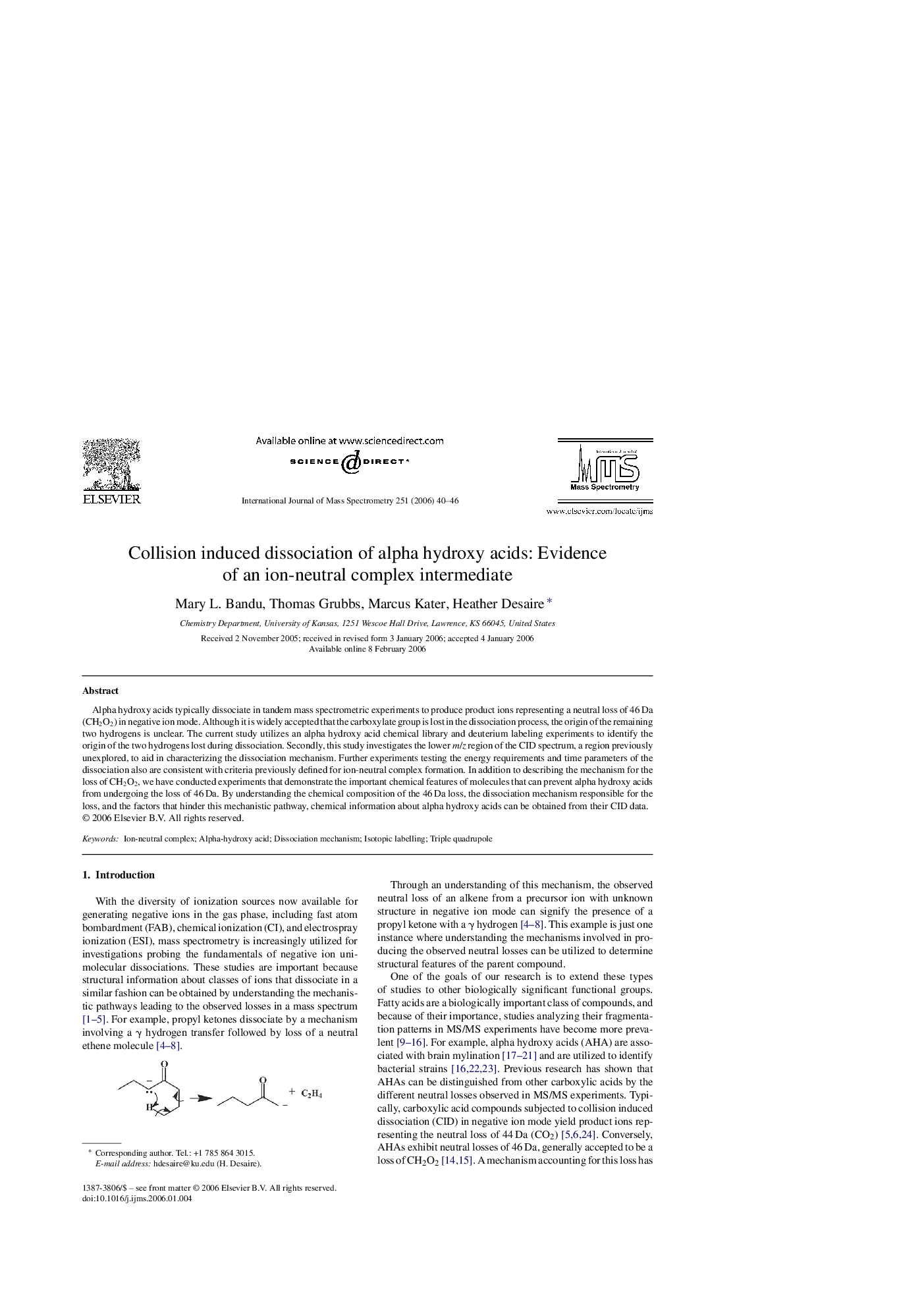| Article ID | Journal | Published Year | Pages | File Type |
|---|---|---|---|---|
| 1192740 | International Journal of Mass Spectrometry | 2006 | 7 Pages |
Alpha hydroxy acids typically dissociate in tandem mass spectrometric experiments to produce product ions representing a neutral loss of 46 Da (CH2O2) in negative ion mode. Although it is widely accepted that the carboxylate group is lost in the dissociation process, the origin of the remaining two hydrogens is unclear. The current study utilizes an alpha hydroxy acid chemical library and deuterium labeling experiments to identify the origin of the two hydrogens lost during dissociation. Secondly, this study investigates the lower m/z region of the CID spectrum, a region previously unexplored, to aid in characterizing the dissociation mechanism. Further experiments testing the energy requirements and time parameters of the dissociation also are consistent with criteria previously defined for ion-neutral complex formation. In addition to describing the mechanism for the loss of CH2O2, we have conducted experiments that demonstrate the important chemical features of molecules that can prevent alpha hydroxy acids from undergoing the loss of 46 Da. By understanding the chemical composition of the 46 Da loss, the dissociation mechanism responsible for the loss, and the factors that hinder this mechanistic pathway, chemical information about alpha hydroxy acids can be obtained from their CID data.
